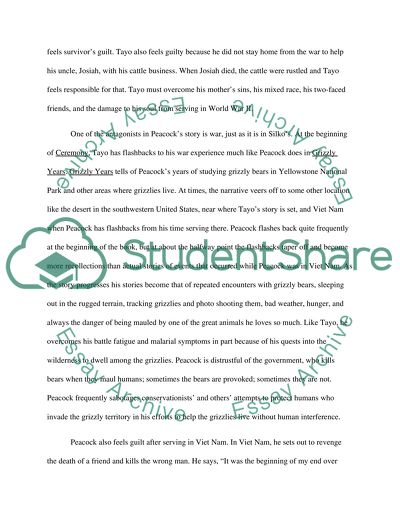Cite this document
(“Compare/Contrast Essay on: Ceremony by Leslie Mormon Silko and Grizzly”, n.d.)
Retrieved from https://studentshare.org/literature/1430116-a-compare-and-contrast-essay-on-the-books-ceremony
Retrieved from https://studentshare.org/literature/1430116-a-compare-and-contrast-essay-on-the-books-ceremony
(Compare/Contrast Essay On: Ceremony by Leslie Mormon Silko and Grizzly)
https://studentshare.org/literature/1430116-a-compare-and-contrast-essay-on-the-books-ceremony.
https://studentshare.org/literature/1430116-a-compare-and-contrast-essay-on-the-books-ceremony.
“Compare/Contrast Essay On: Ceremony by Leslie Mormon Silko and Grizzly”, n.d. https://studentshare.org/literature/1430116-a-compare-and-contrast-essay-on-the-books-ceremony.


